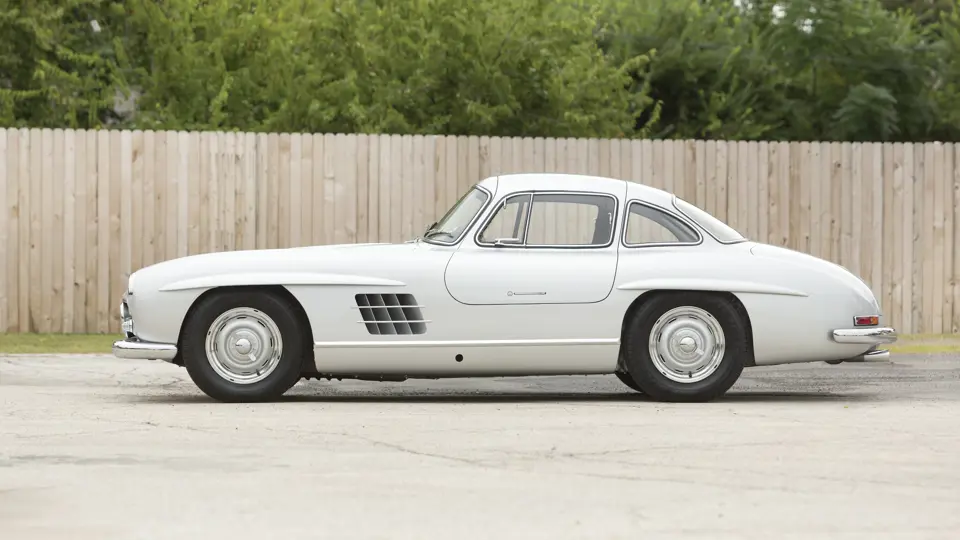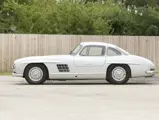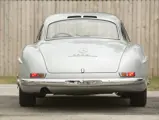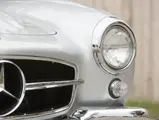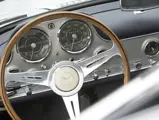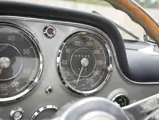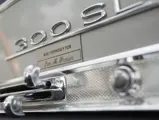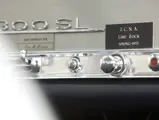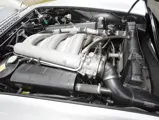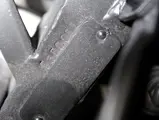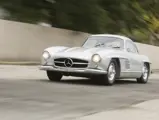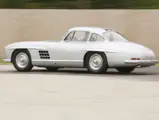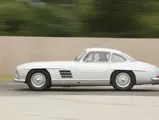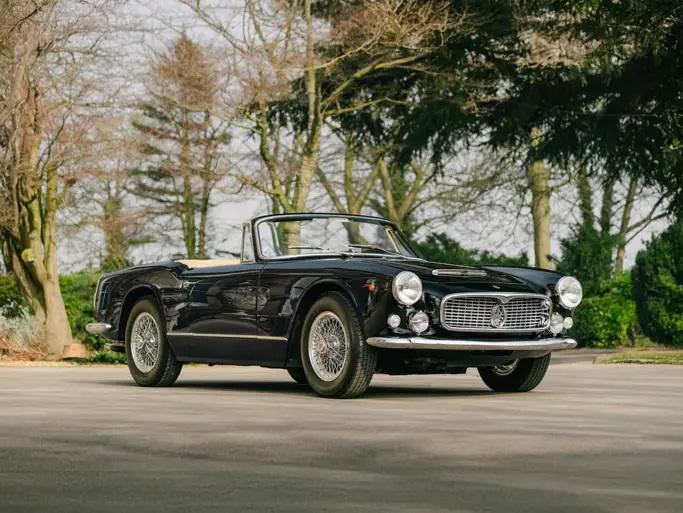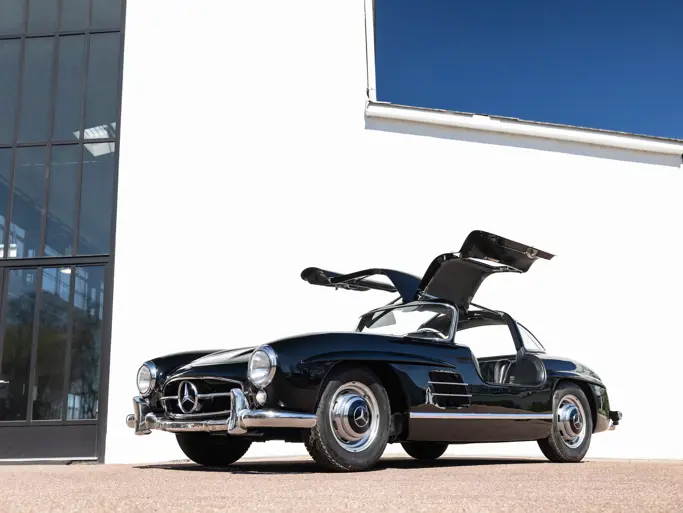215 hp (DIN), 240 hp (SAE), 2,992 cc SOHC six-cylinder engine with Bosch mechanical fuel injection, four-speed manual transmission, coil-spring independent front suspension, coil-spring and swing-axle rear suspension, and four-wheel hydraulic drum brakes. Wheelbase: 94.5 in.
Mercedes-Benz’s 300 SL claimed 2nd in the Mille Miglia; 1-2-3 in the Berne, Switzerland, Sports Car Race; 1st and 2nd at Le Mans; 1-2-3-4 at the Nürburgring; and 1st and 2nd at La Carrera Panamericana. The company’s U.S. distributor, Max Hoffman, decided, from his Frank Lloyd Wright-designed Park Avenue showroom, that there was a market in America for a fast, sensual Mercedes-Benz coupe, and a production version of the racing 300 SL, complete with the fascinating gullwing doors, which were necessitated by the unusual frame design, would be it.
Fuel injection replaced the race car’s carburetors, and the Bosch mechanical unit would be the first for a production car. After the 11 prototype W194s, including the so-called “Hobel,” were made in all-alloy, the new Karl Wilfert-designed body was largely made of steel; it also retained an aluminum hood, doors, and trunk lids, and it included bumpers (with over-riders for U.S.-spec cars, but optional for the rest of the world) and numerous creature comforts, including a tilt-wheel for ease of entry and a sumptuous interior, which is a requisite for road use.
The SL (translated to English as “Sport Light”) moniker reflected the pioneering use of welded tubular-steel ultra-light frame construction, which made it only 182 pounds. The car also featured a fully independent suspension, in addition to its fuel-injected, 3.0-liter (2,996-cubic centimeter) OHC straight six with dry-sump lubrication; the motor was inclined to the side in order to reduce the height of the front end. The power, rated at 240 brake horsepower at 6,100 rpm (SAE) and 215 brake horsepower at 5,800 rpm (DIN) with the factory-optional or dealer-installed “sport” camshaft, was delivered through a four-speed manual gearbox. With a 161-mph top speed and a 0–60 acceleration of approximately eight seconds, depending on the rear-end ratio, which could be selected from five options, the 300 SL was the fastest production automobile of its time.
It took practice to elegantly climb into a Gullwing, with its wide door sills and low-set seats, but once one was seated and the door swung down, all was right. The pedals are exactly where one’s feet wants to find them, the steering wheel and shifter are at a comfortable level, and the entire car seems to wrap around one’s body like a Savile Row suit. The result was a comfortable, snug place in which to carry oneself and a loved passenger to ridiculously high speeds while negotiating mountain passes, seaside highways, and the like. Long before other manufacturers advertised racing cars for the road, the 300 SL truly delivered it to those who could afford it.
Appropriately, for an automobile that Max Hoffman had almost single-handedly willed into being, the production 300 SL made its debut in the United States, not in Germany, which was a Mercedes first. More than 1,000 of the 1,400 cars produced between 1954 and early 1957 where delivered through Hoffman, to whose showrooms the rich and famous flocked. The 300 SL was as much a status symbol in its time as it is today, as it has been favored by everyone, from Hollywood stars—Clark Gable took one on location for his films—to racing legends and genuine royalty; the kings of Jordan, Belgium, and Greece all became owners within the first year of production. Argentinean dictator Juan Peron had been a racing driver before finding his true course in politics, and he, too, owned a 300 SL.
The 300 SL also raced, and it was piloted by such legends as John Fitch, Olivier Gendebien, Paul O’Shea, Prince Metternich, and, of course, Sir Stirling Moss. It all added to the romance of a car that seemed destined to become a legend the moment production began. It had all the right ingredients: it was incredibly expensive, incredibly exclusive, and incredibly fast, and any red-blooded human who had ever pushed a clutch pedal would’ve sold his or her soul for the feeling of 161 mph behind the wheel. “A thoroughbred in every sense of the word,” advertising boasted, “and a car which will be recognized by all enthusiasts as the ‘last word’ in sporting automobiles; a car which puts indescribable pleasure into driving!”
CHASSIS NO. 198.040.6500052
The car offered here, chassis no. 198.040.6500052, is documented by noted 300 SL historians as having been built for display at the 1956 Turin International Automobile Salon. According to its Mercedes-Benz Classic Center data card, an English translation of which is in included in the file, it was originally displayed in Silver Grey Metallic (180), with a special-order red leather interior (1079) and arguably the most desirable factory option, Rudge wheels.
In the late 1960s, the 300 SL was discovered in West Nyack, New York, by avid Mercedes-Benz enthusiast Jan Fraser. In a recent telephone conversation, Mr. Fraser happily recalled the car, stating that, when he found it, he was told that it had been raced in Italy, and, indeed, it still showed signs of its time in competition. It had been refinished in red with a light beige interior, but it retained a silver dashboard, which was a nod to its original livery. “You didn’t have to take your hat off to anyone in that baby,” Mr. Fraser recalled. “It was a wonderful automobile.”
Mr. Fraser eventually sold his 300 SL to Dr. Leon Levine, who would keep it for decades. It was acquired from Dr. Levine by its present owner, a noted collector from the western United States, in whose care it has been body-on restored by California specialist Tom Drummond in its original, iconic Silver Grey Metallic shade, as it had been shown in Turin. Importantly, many components of the car, such as the silver dashboard, were in such good original condition that they were able to be preserved. The interior boasts comfortable 300 SL roadster-style seats that have been reupholstered, utilizing factory-correct materials and patterns, in blue leather, which is a more subtle accent to the sparking finish. The chassis underneath is covered by belly pans, and importantly, for the discerning enthusiast, the original Rudge knock-offs remain on the disc wheels.
Every collector has to own and drive a 300 SL Gullwing once in his or her life. This example is an ideal opportunity to capture one of fine quality and one that has been preserved, enjoyed, and restored by great enthusiasts. It is finished in an iconic color, it bears original Rudge wheels, as it has since new, and, most importantly, it is perhaps the only original factory 300 SL auto salon car available for sale today.
Jan Fraser describes his beloved 300 SL best: “It’s had a wild beginning, a mild middle, and it’s now ready for new excitement.”
Please note that this car is offered with a set of fitted luggage, which has been added since photography.


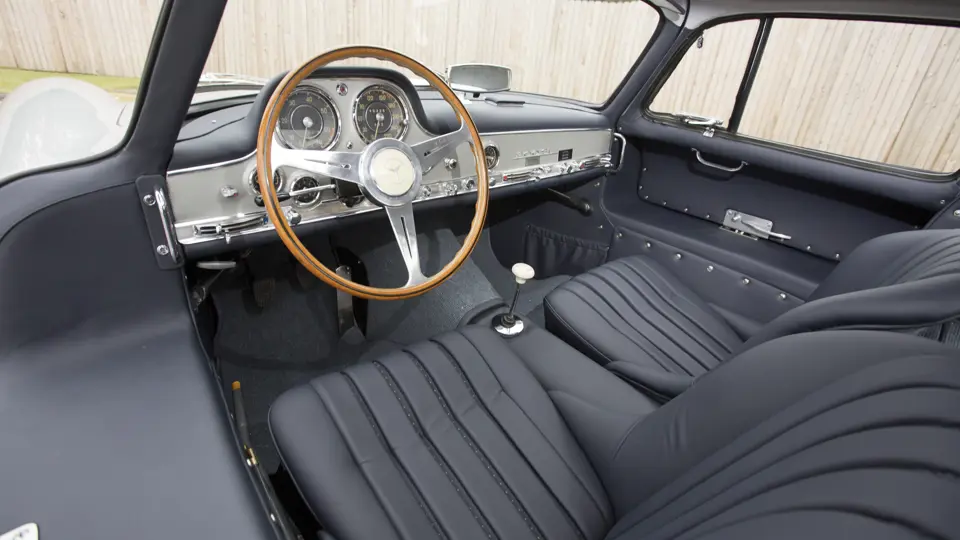

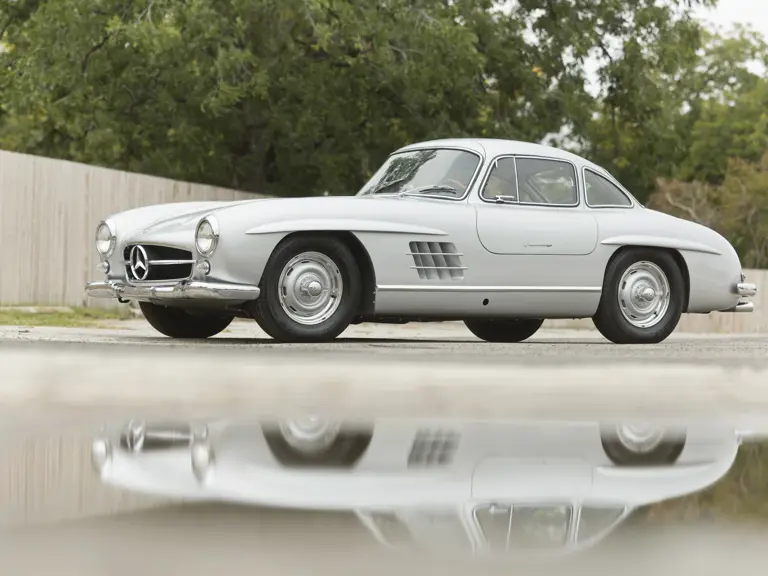


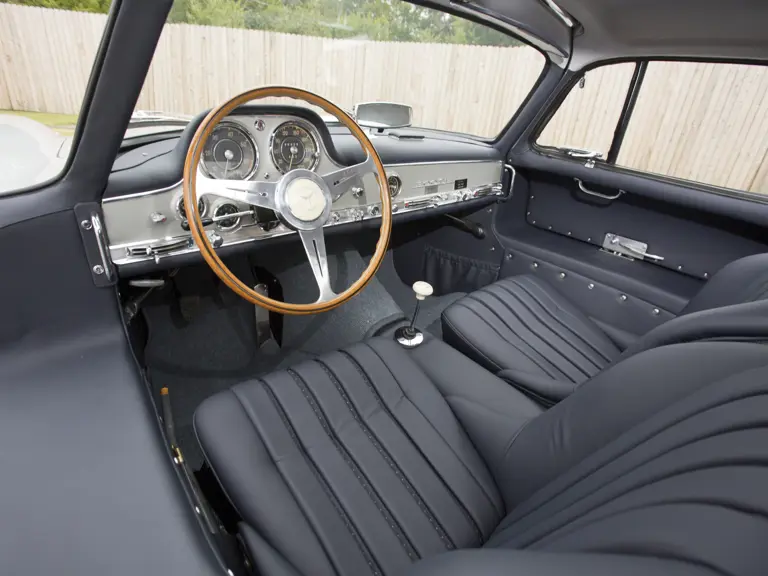
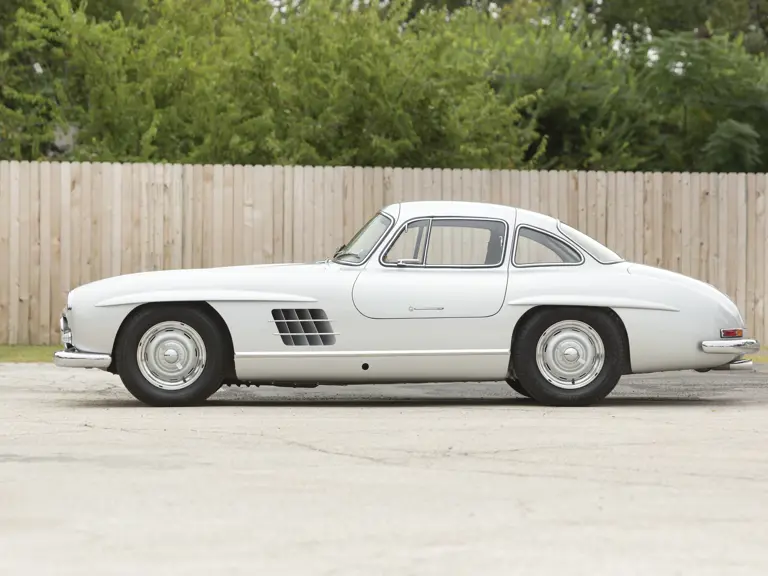
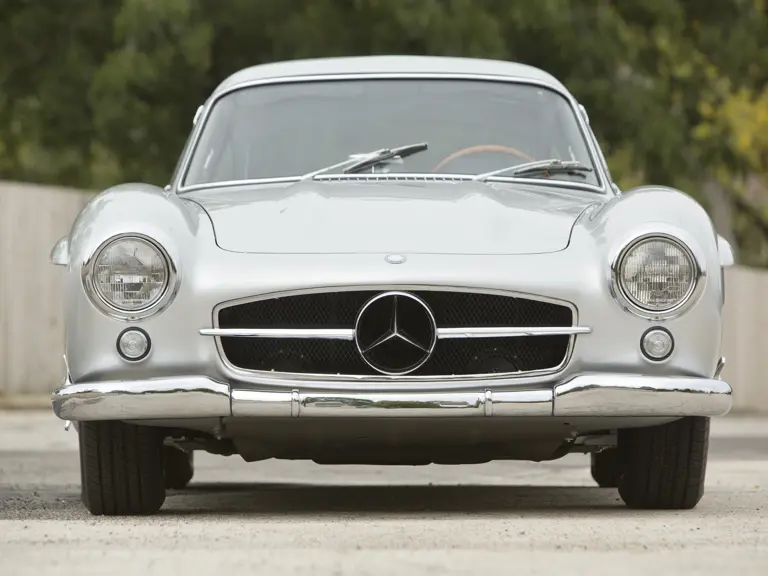
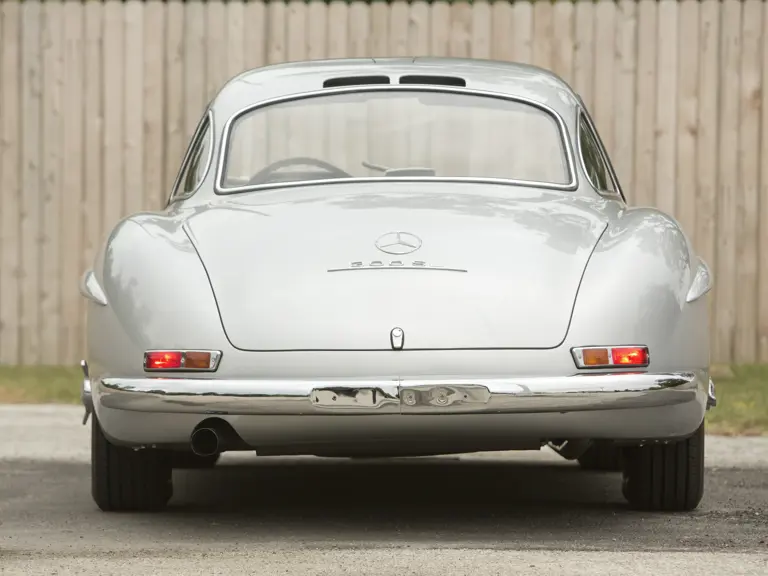
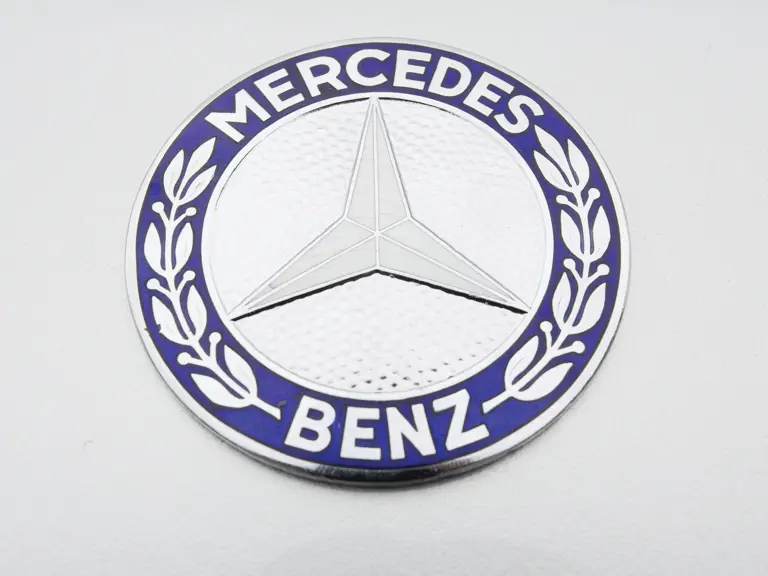
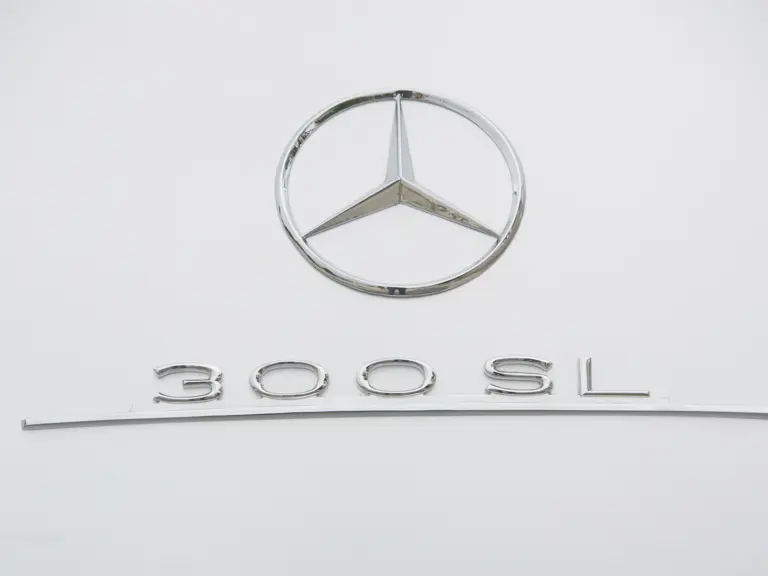

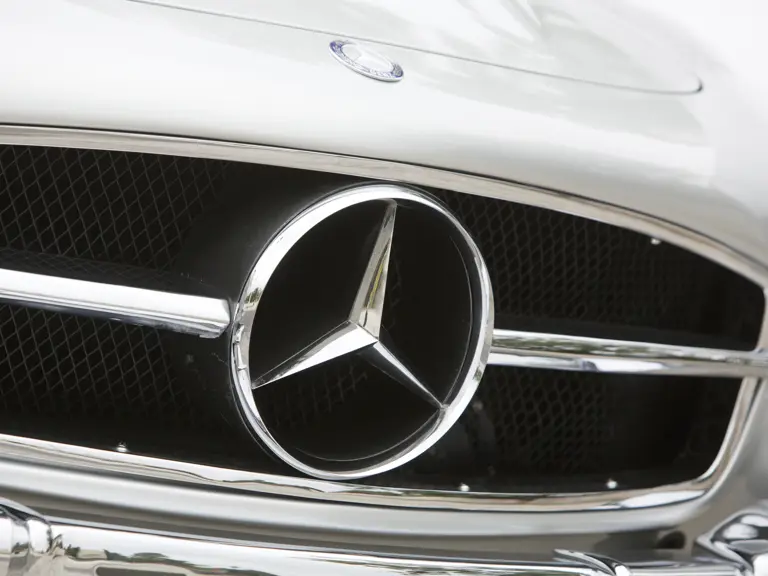
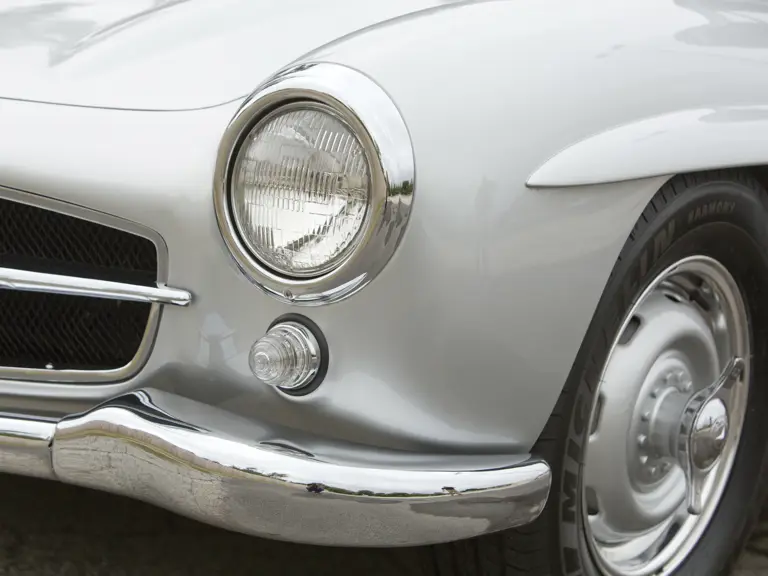

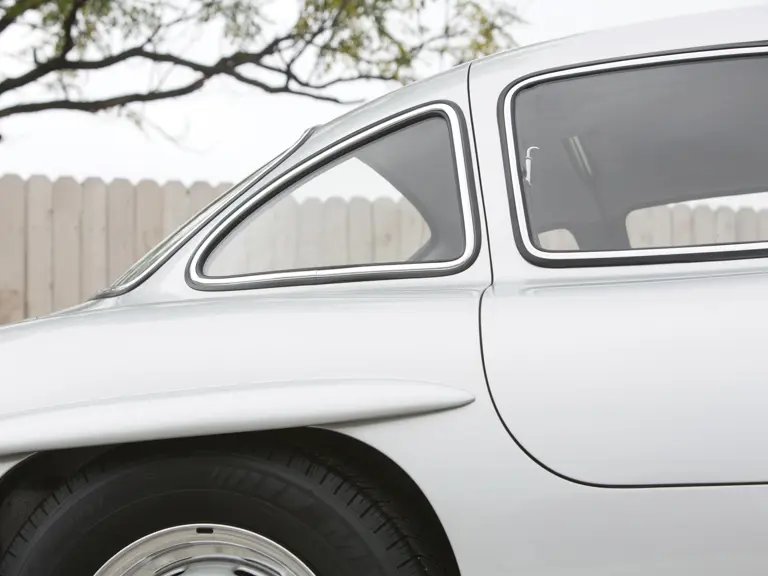
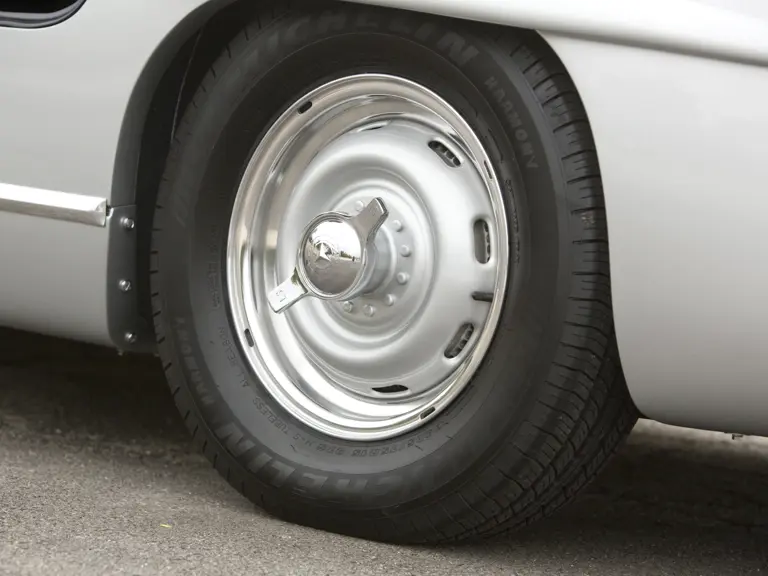
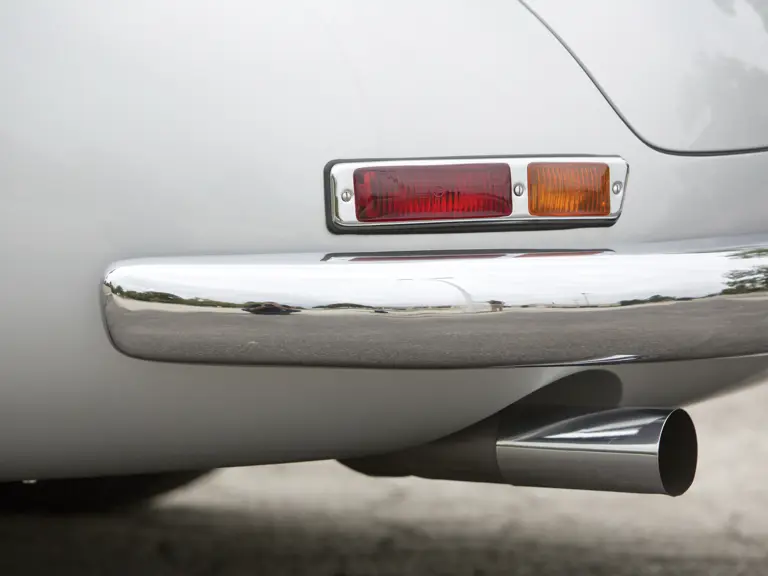
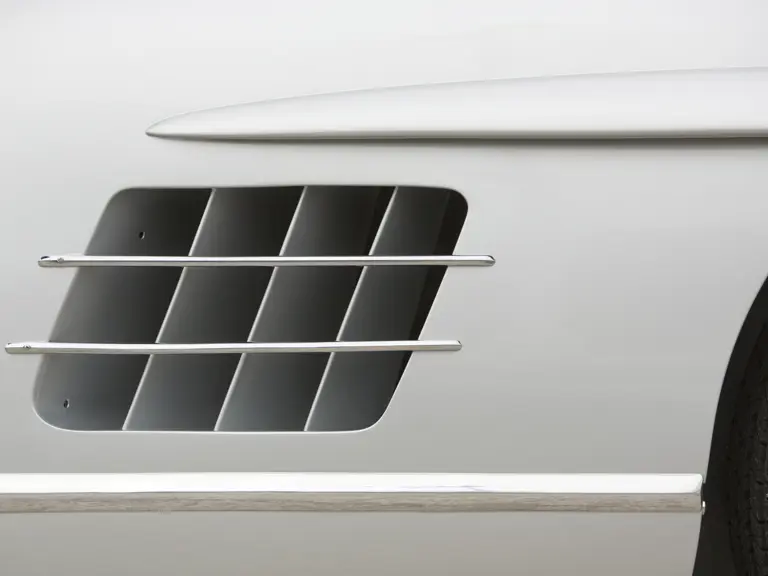
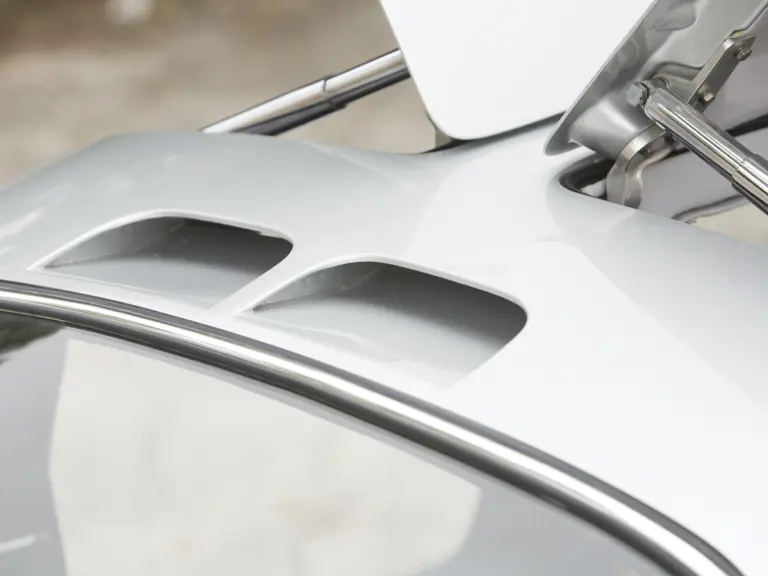
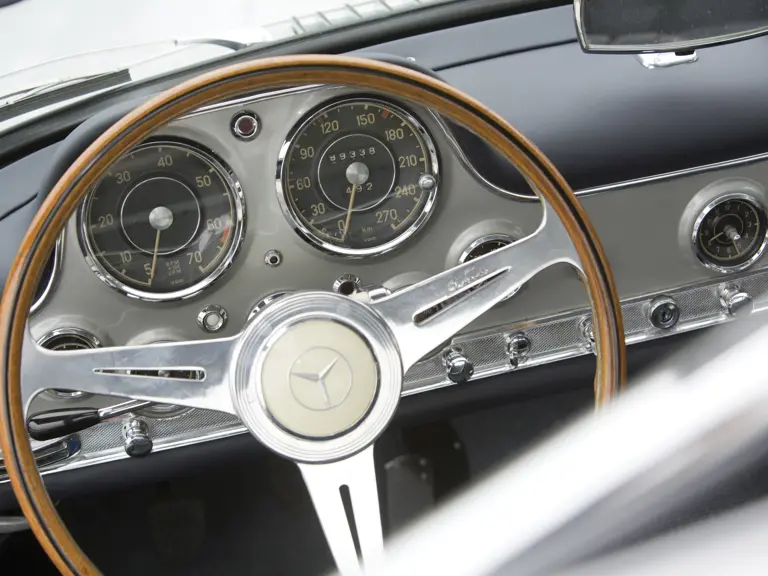
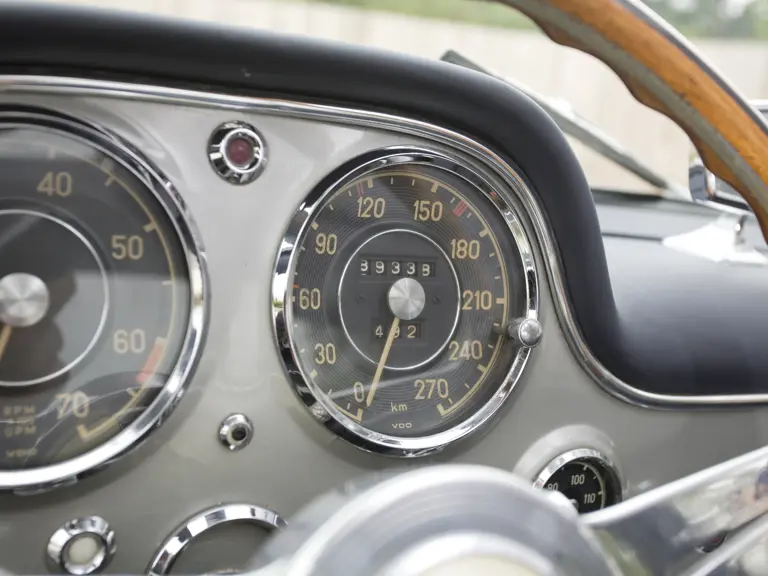
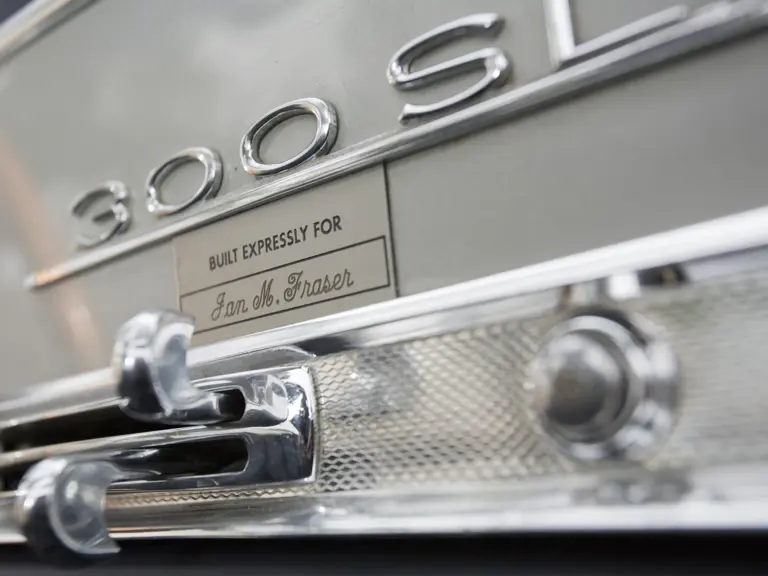
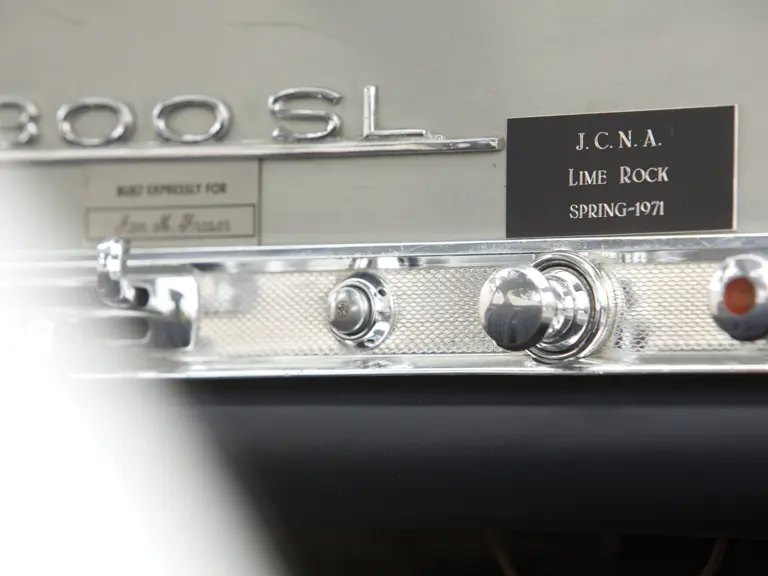


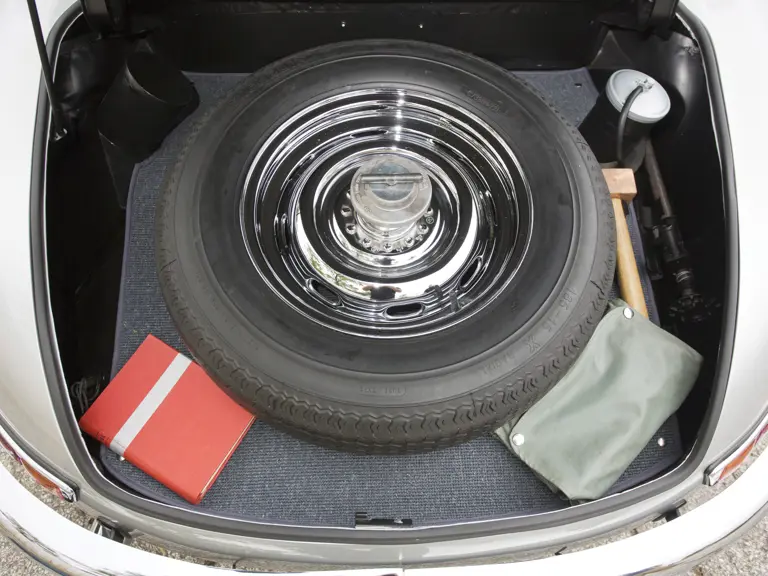
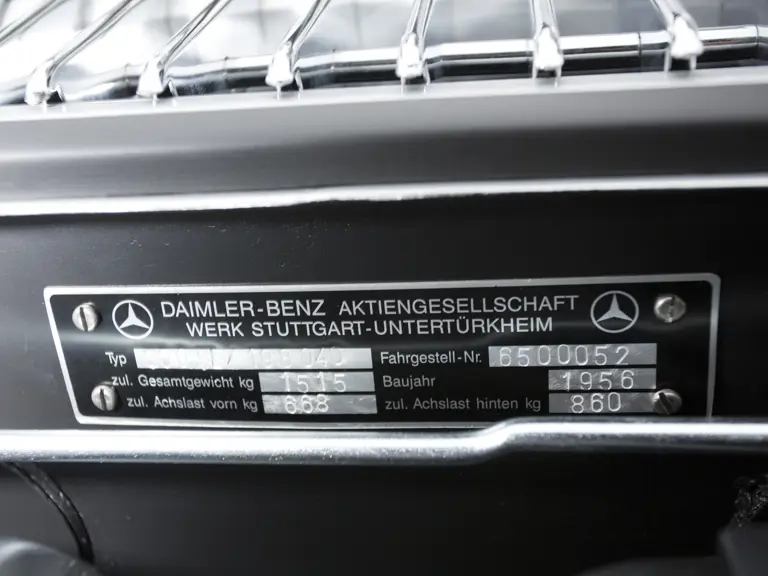
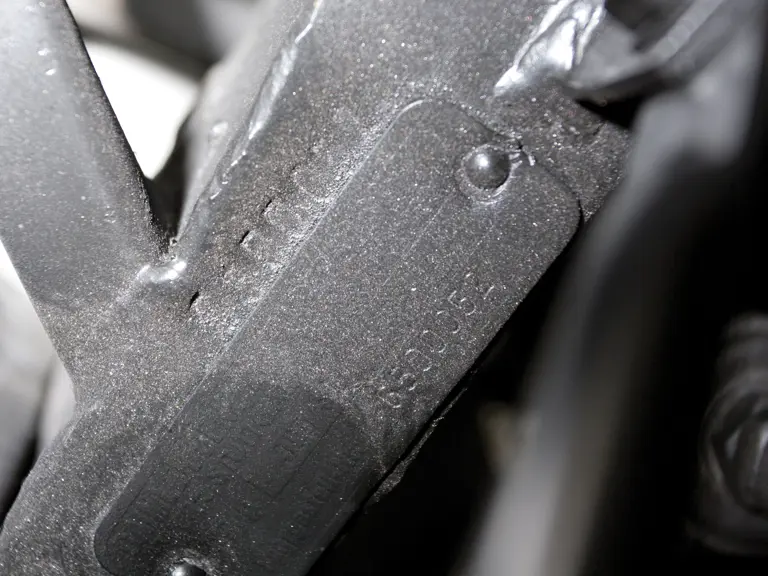
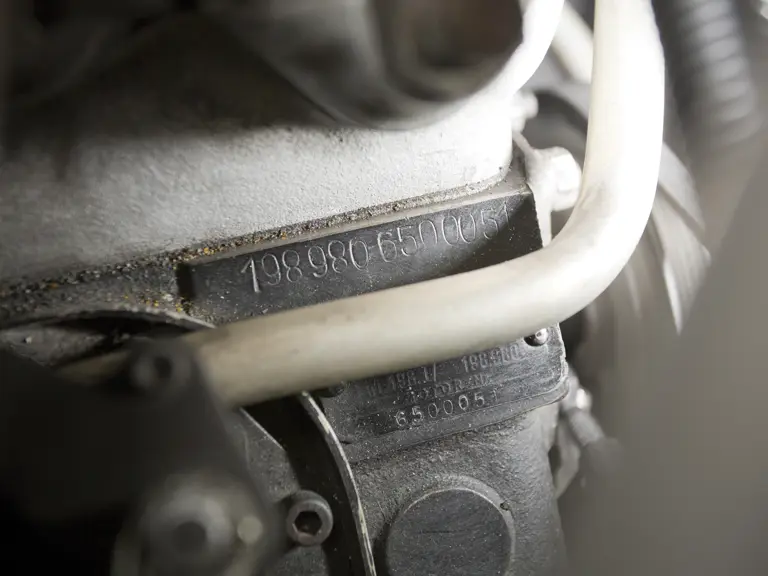
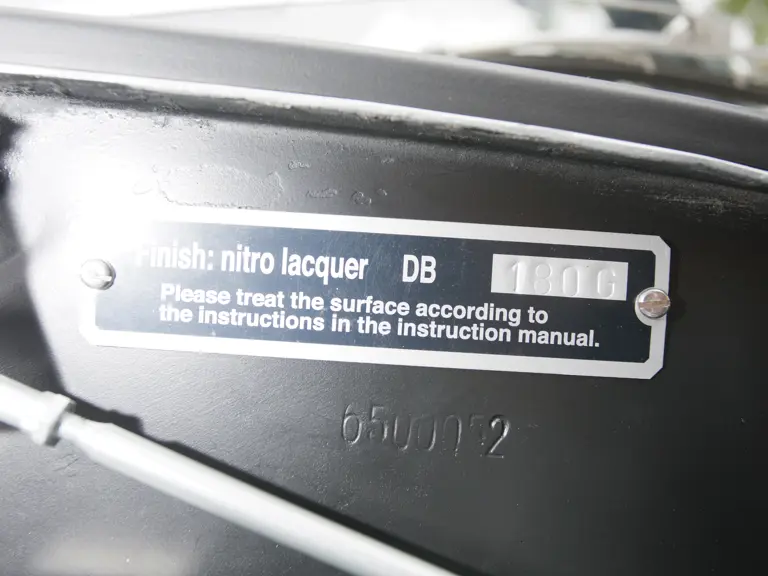
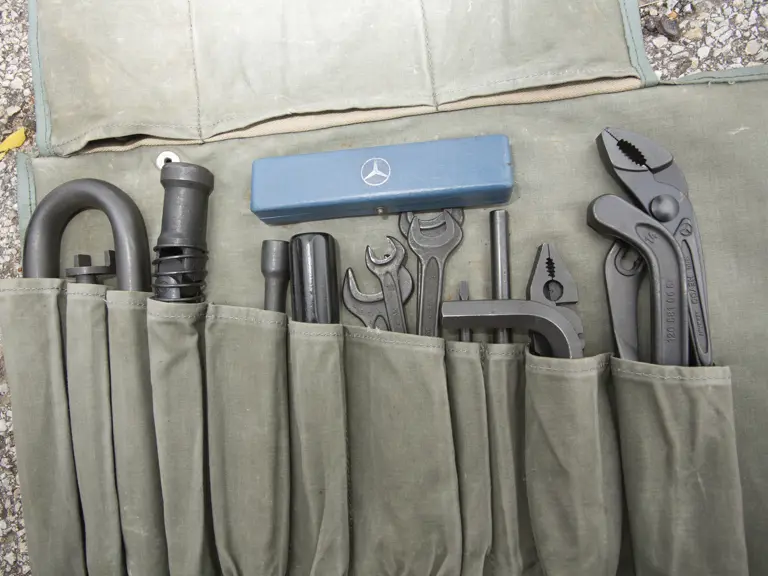

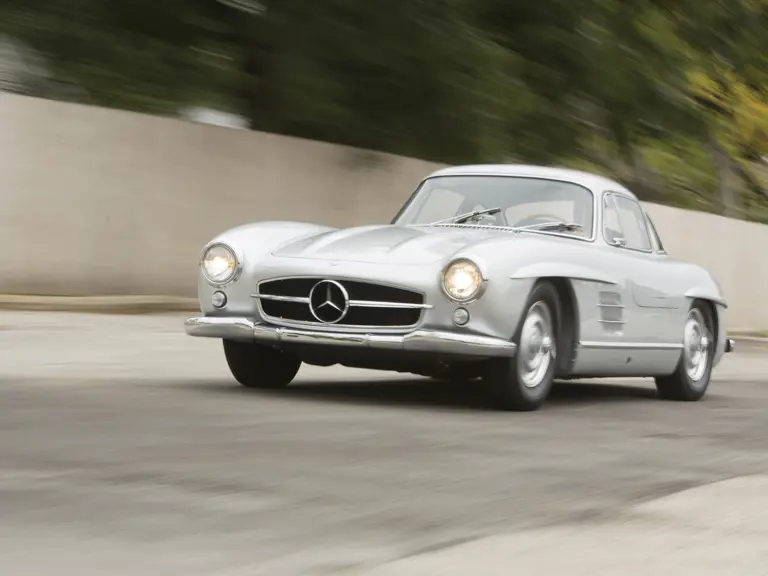
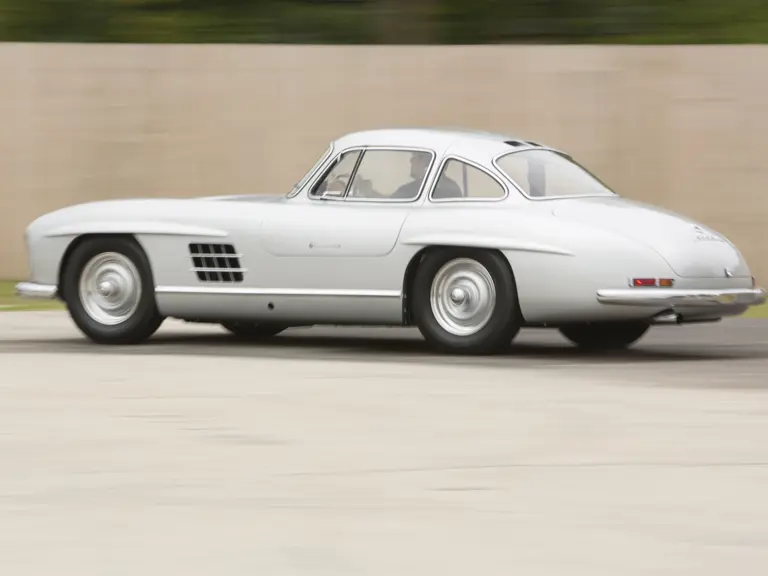

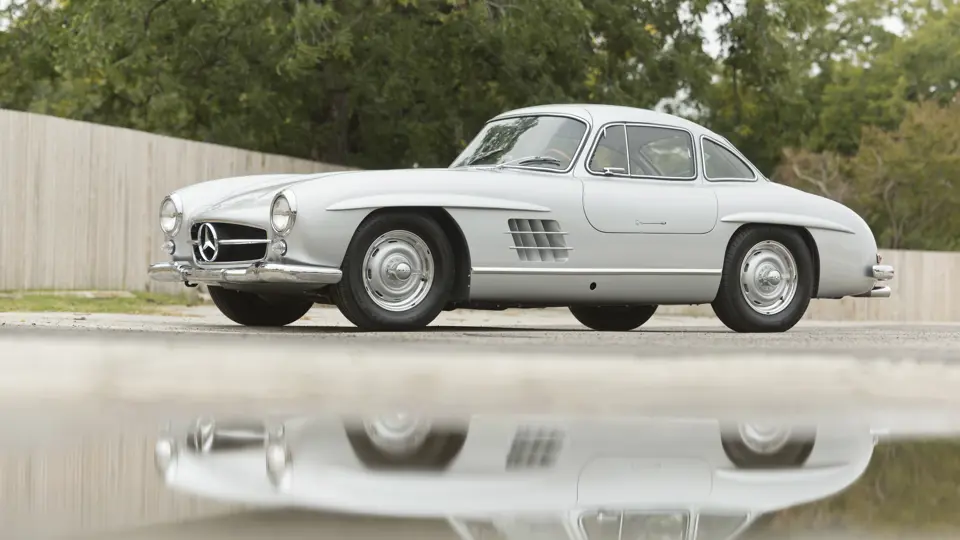
 | Phoenix, Arizona
| Phoenix, Arizona
